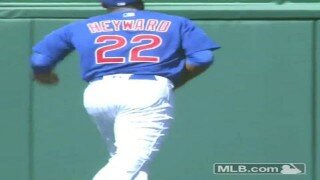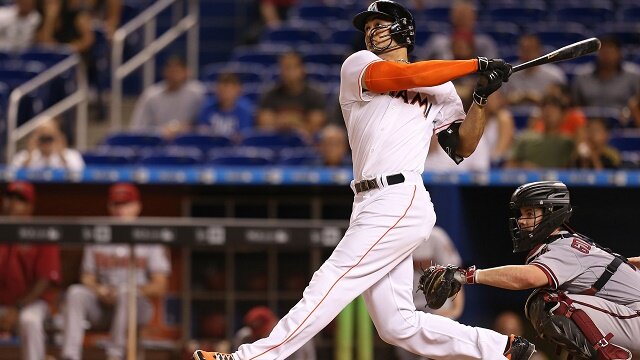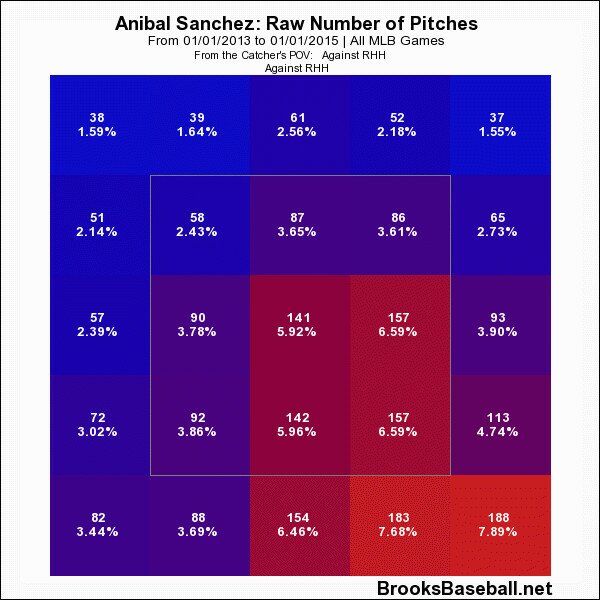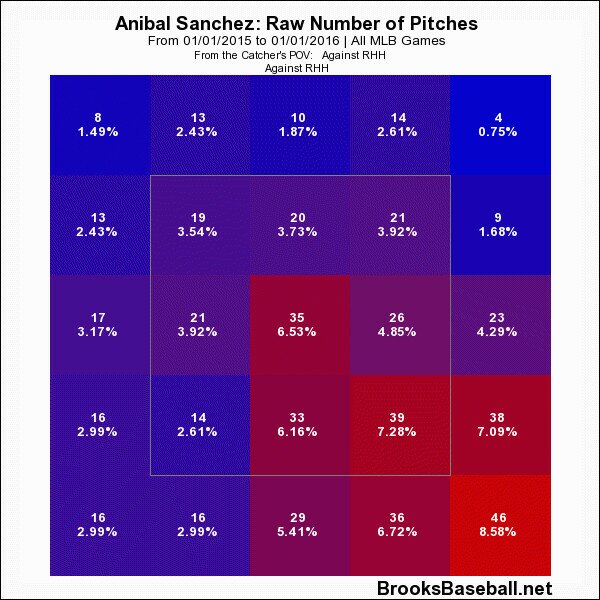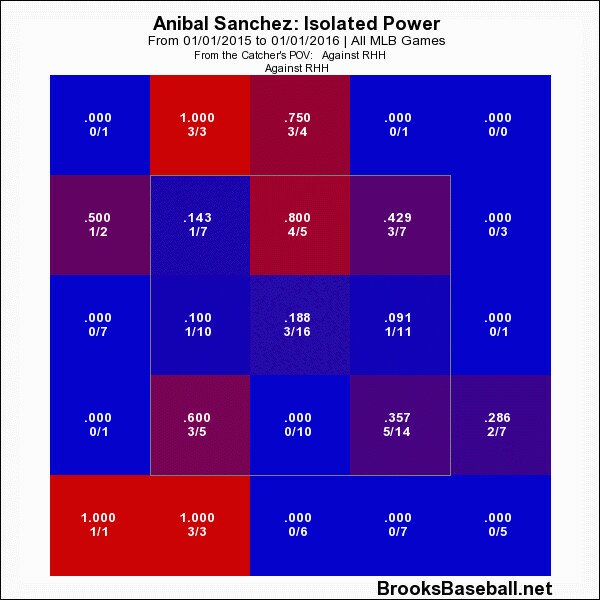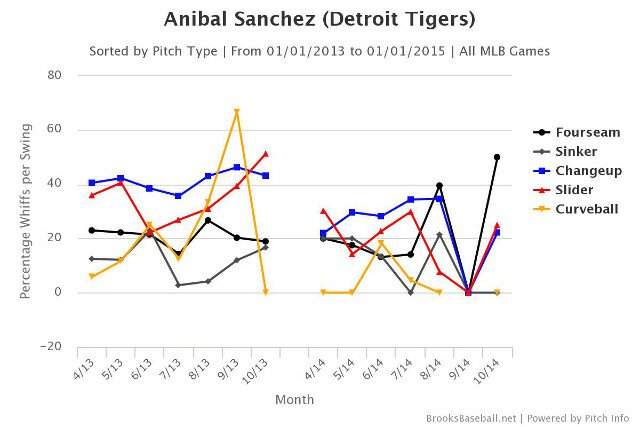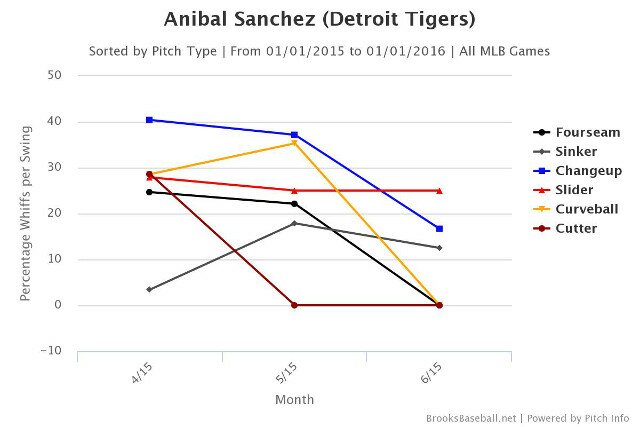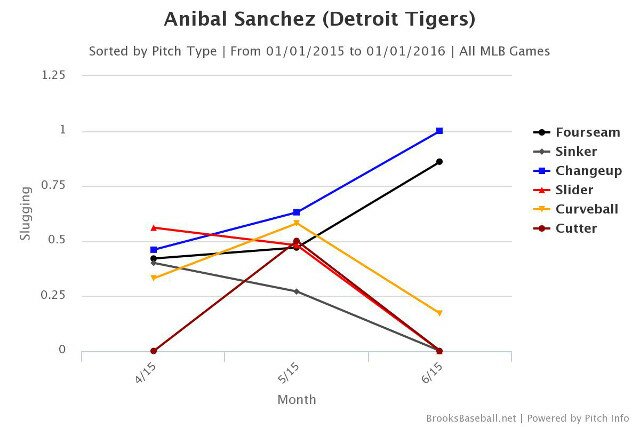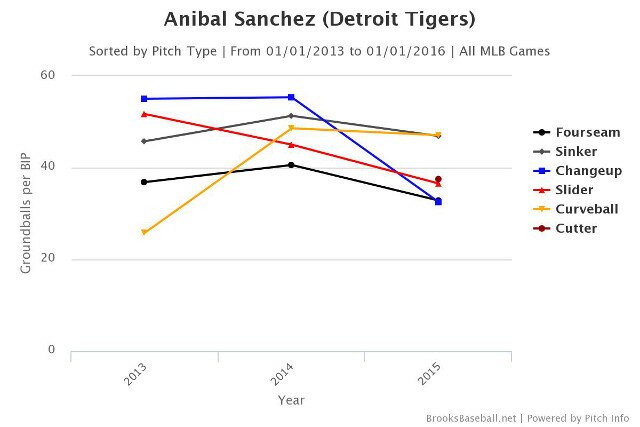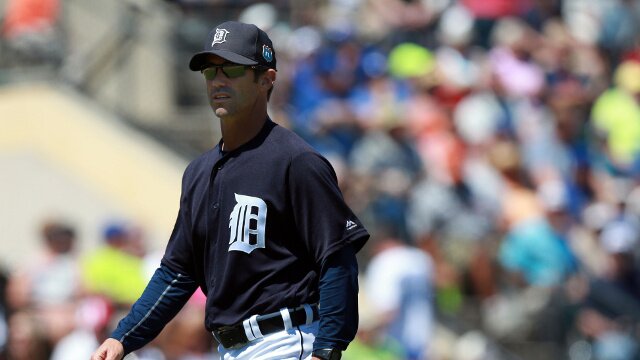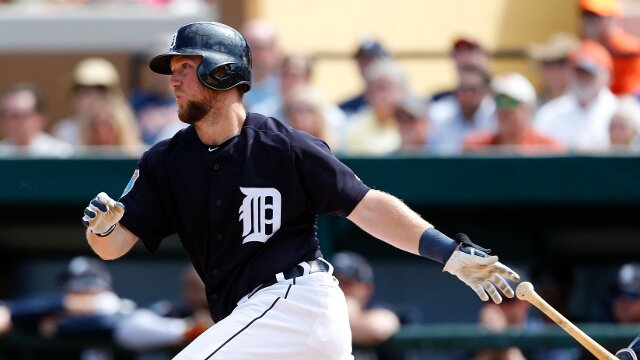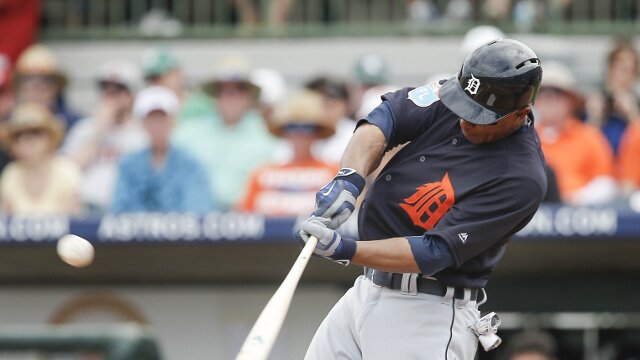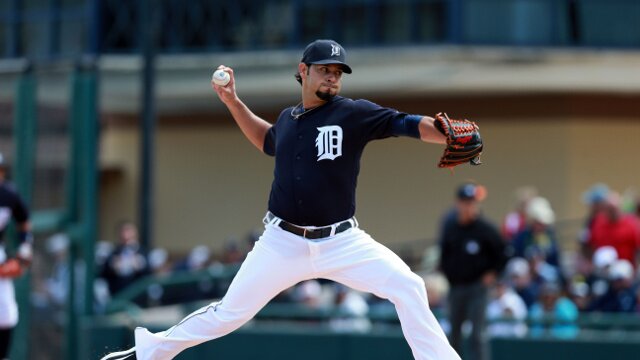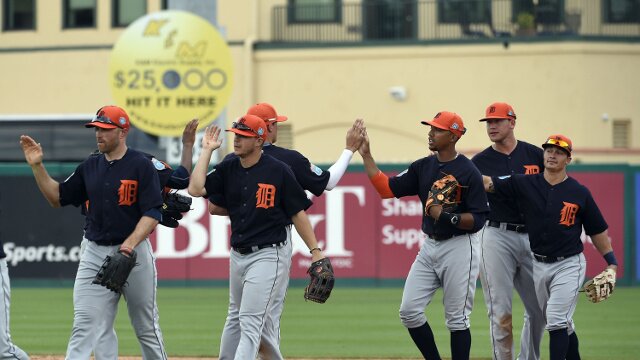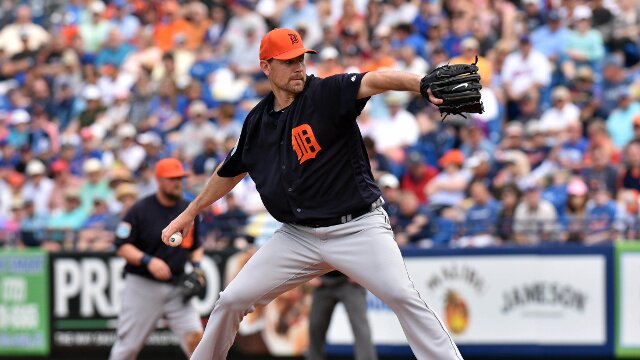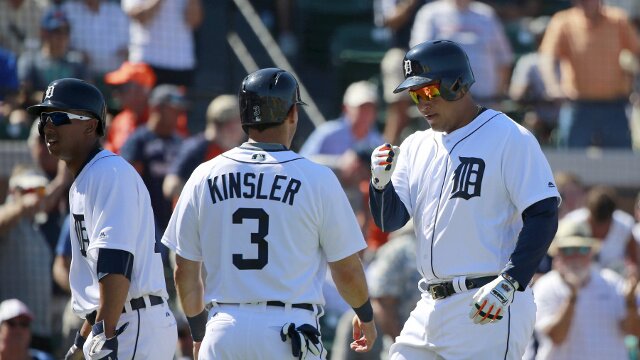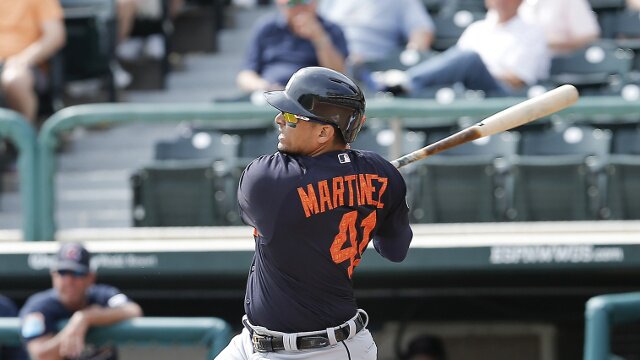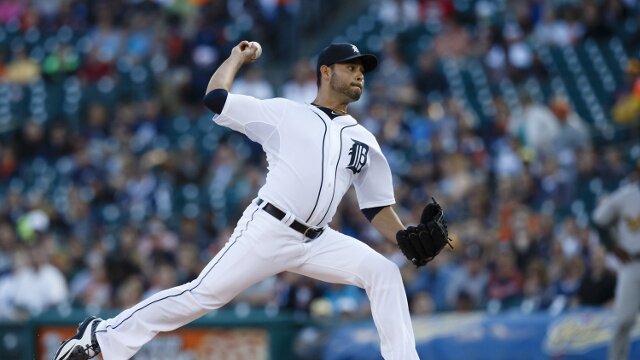
Nearly two and a half years ago, the Detroit Tigers brought starting pitcher Anibal Sanchez back to the Motor City on a five-year, $80 million deal. After first coming to Detroit in a trade with the Miami Marlins in July of 2012, Sanchez was solid over 12 regular-season starts and dazzled in the postseason, but many believed that the contract seemed a bit excessive, especially for a pitcher who had been through his share of injuries since first bursting onto the scene back in 2006.
Sanchez was, however, coming off of a three-year stretch in which he was worth an average of 3.6 fWAR, making an annual payday of $15 million-plus seem quite justifiable. After all, it is generally agreed that each win above replacement is worth a bare minimum of $5 million on the open market. Plus, a funny thing happened the very next season.
In 2013, Sanchez had the best year of his career, going 14-8 with an AL-best 2.57 ERA and a 1.15 WHIP in a 5.9 fWAR campaign. Although health was a factor in 2014 and he was limited to only 126 innings, Sanchez was masterful yet again, going 8-5 with a 3.43 ERA and a 1.10 WHIP in a 3.1 fWAR campaign. In the blink of an eye, what once seemed like an overpay quite arguably became one of the better bargains in MLB.
Over 2013 and 2014 combined, Sanchez’s name could be found among some of the game’s best in a number of advanced statistical categories. Among all qualified starting pitchers, the right-hander ranked second in FIP (2.52), 14th in xFIP (3.18), 16th in SIERA (3.26), 12th in K/9 (8.91) and 10th in fWAR (9.0). The number that stuck out the most, though, was his microscopic 0.38 HR/9, which ranked first in all of baseball.
Granted, he threw fewer innings, but he was even better at limiting homers per nine than Clayton Kershaw and Adam Wainwright.
As a result of the success that Sanchez enjoyed over the past two seasons, many were expecting big things from him this year. After the trade of Rick Porcello and departure of Max Scherzer, it was widely believed that getting a full season out of Sanchez would go a long way in helping the staff bounce back from such significant losses.
While Sanchez has indeed been able to stay injury-free up to this point, he has been faced with a different type of challenge as he is struggling in a way that has fans collectively scratching their heads. Through 12 starts, Sanchez has gone 3-7 with a 5.69 ERA and a 1.30 WHIP. His 4.51 FIP, 3.89 xFIP and 3.81 SIERA may paint a more optimistic portrait and his K/9 is still in good shape at 8.35, but he clearly hasn’t been the same guy.
Most alarmingly, Sanchez has given up 47 earned runs and 13 homers, each of which lead the AL (although it should be noted that R.A. Dickey, Jered Weaver, Phil Hughes and Matt Shoemaker have each given up 13 big flies as well.) As a matter of fact, Sanchez has now given up as many long balls as he did in 2013 and 2014 combined. One more earned run will already match his total from 2014 as well.
The long ball has actually been haunting Sanchez since Spring Training, as he gave up seven homers over 30 innings of Grapefruit League work this year. There have been whispers about the issue perhaps being mechanical, but whatever the problem is, Sanchez and the Tigers’ coaching staff have been slow to find the remedy.
Plus, it is not only the home runs. Sanchez has been giving up more fly balls in general while inducing fewer ground balls. His current 40.7 percent fly ball rate is above his career average of 36 percent, and his 36.6 percent ground ball rate is well below his 44.3 percent lifetime clip.
Strangely enough, many of his struggles have come against right-handed hitters. Righties are slashing .282/.317/.540 with eight home runs and a .366 wOBA against Sanchez, whereas lefties have been limited to a .228/.311/.403 triple-slash with five home runs and a .313 wOBA. Righties have also posted an unsightly 17.8 percent HR/FB against the 31-year-old.
So, how could this possibly be happening? Well, perhaps we can begin by examining Sanchez’s pitch location. When Sanchez was dominating between 2013-2014, he liked to keep the ball down and away from right-handed hitters.
This year, while there may not be a huge difference and he is still throwing quite a few pitches that are low and outside to righties, there has been a slight uptick in the percentage of balls that he has been leaving at the top, or in some cases above the zone. A mechanical issue would help to explain him missing his spots.
Sure enough, righties are crushing the pitches that are in most of these areas.
Still, Sanchez’s 2.78 BB/9 is below his career mark of 3.07 and comparable to the combined 2.46 that he managed from 2013-2014, which indicates that his control actually hasn’t been that bad overall.
Aside from location, the other issue to examine could be Sanchez’s pitch selection and the overall quality of his stuff. Opponents have hit four home runs off of his four-seamer, four off of his changeup, four off of his slider and one off of his curveball. While one could argue that he has been struggling with almost everything in his arsenal to a certain extent, there are two pitches that stand out in particular, one of which is the four-seamer.
According to Brooks Baseball, the average velocity of Sanchez’s four-seam fastball was coming in at a speed of 93.74 mph during all MLB games between 2013-2014. This year, it is down to 92.82 mph, and he is using it a bit more frequently. While the four-seamer accounted for 35.73 percent of his arsenal over the past two years combined, his usage of the pitch has spiked to 41.69 this year, so it appears that a fastball that has gone down a tick in velocity has become a larger part of his repertoire.
The other pitch that has been raising a few red flags is the changeup, and his issues with this pitch could very well be at the center of his struggles. According to Fangraphs’ PITCHf/x data, the changeup has been his best pitch every season since 2011, and it was given a value of 9.2 and 4.8 runs above average over the past two seasons respectively. Right now, it currently has a PITCHf/x value of -3.3.
Since the beginning of his excellent 2013 campaign, it has been one of his finest “wipeout pitches,” generating a high percentage of whiffs per swing in the regular season as well as the postseason (excluding Sept. 2014 when he was on the DL for the majority of the month.) While the slider was good for him in that regard as well, the changeup was a bit more consistent.
Granted, the pitch is still generating whiffs per swing at a rate of 37.50 percent this year, which is actually up from the 28.89 he was getting last year, but the percentage has been falling since April. Yes, he has only made one start in June and this could normalize, but it is worth pointing out nevertheless.
The 57.40 percent overall swing rate against the changeup may be on par with previous years and doesn’t exactly suggest that opponents are sitting on the pitch just yet, but they are clearly having more success against it. Against Sanchez’s changeup, opponents have a 42.50 percent line drive per BIP, which is up from 19.15 percent a season ago.
Furthermore, opponents are currently slugging a cool .586 against the pitch, which is also way up from the .320 they managed last year. As the season progresses, the slugging percentages against both the changeup and four-seamer continue to rise.
While Sanchez’s fastball/changeup combo has been so effective in keeping hitters off-balance in the past, it appears that his opponents have clearly been able to get more comfortable at the plate this year.
Perhaps even more strikingly, while the changeup was his best ground-ball inducing weapon over the past two years, generating grounders per BIP at rate of 55.0 and 55.32 percent respectively, he is only getting grounders at a 32.50 clip on the pitch this season.
Although it is easy to see what has been going wrong with Sanchez this year (more home runs, fewer ground balls, etc.), the question of why still remains somewhat of a mystery. After all, he is a pitcher who should still be right in his prime. Unless he is concealing an injury or tipping his pitches, his aforementioned mechanical issues in addition to having slightly less effective stuff would seem to be the most logical explanations.
It is also possible that the real Sanchez may be more in line with the guy baseball fans saw from 2010-2012. In reality, he may be closer to a 3.0-ish win player, and perhaps fans got a little carried away after his Cy Young-caliber 2013 and great partial season last year. Plus, it wasn’t too long ago when he gave up 20 home runs in back-to-back years in 2011 and 2012, which might suggest that the rate at which he was keeping the ball in the park over the past two years was unsustainable as well.
Even if Sanchez can’t get back to the impressive form he displayed over the past two years, the Tigers would still gladly take a pre-2013 version of him. Given the issues that Detroit’s rotation has faced this year, Sanchez’s struggles literally could not have come at a worse time for the team.
Aside from David Price and Alfredo Simon, the staff has been quite shaky. Of course, the Tigers may get a bit of a boost with the return of Justin Verlander, who just struck out nine in his latest rehab outing, but that is still a situation where they should hope for the best and prepare for the worst.
In order for the Tigers to claw their way back to the top of the AL Central, they will need Sanchez to rediscover at least some of his past dominance. Regaining the mastery of his terrific changeup will obviously be one of the biggest keys for him moving forward.
* All statistical information courtesy of Baseball Reference, Brooks Baseball, ESPN.com and Fangraphs
Brad Faber is a Senior Writer and Sabermetrics Columnist for www.RantSports.com. Follow him on Twitter @Brad_Faber, “Like” him on Facebook or add him to your network on LinkedIn or Google












